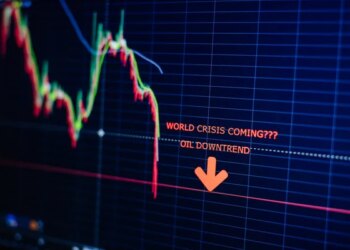The world of investing, for decades a realm of high entry barriers and exclusive access, is being fundamentally democratized by a simple yet revolutionary concept: fractional shares. This innovation allows investors to buy a portion of a single share of stock, rather than being forced to purchase the entire, often expensive, unit.
This seemingly small change has had a monumental impact, tearing down the financial wall that once prevented millions of people from owning a piece of the world’s most successful companies. It has transformed a market once reserved for the wealthy into a truly accessible and inclusive financial landscape.
The power of fractional shares lies in their ability to make high-priced stocks—from technology giants to established blue-chip corporations—attainable for anyone with even a few dollars to spare. This article will provide an in-depth look at how fractional shares work, explore the market forces that have driven their rapid adoption, and examine their profound impact on both individual investors and the broader financial services industry.
Before the advent of fractional shares, an individual with $50 to invest had a very limited set of options. They couldn’t buy a single share of a company trading at $2,000, for example. This forced them into a narrow range of low-priced stocks or to invest through complicated mutual funds, which often came with high fees. Fractional shares eliminate this problem entirely.
An investor can now own a piece of a company like Amazon or Google for as little as $1. This has not only lowered the barrier to entry but has also made it easier for people to create a truly diversified portfolio, a cornerstone of sound investment strategy. It’s a game-changer that has empowered a new generation of investors to take control of their financial future.
How Fractional Shares Work: The Mechanics
The concept of a fractional share is a technological and procedural innovation. It’s not that a single share of stock is physically broken into smaller pieces; it’s a process facilitated by financial institutions and their technology.
- A. The Brokerage’s Role: When an investor places an order for a fractional share, their brokerage acts as the intermediary. The brokerage aggregates orders from multiple investors and then purchases a full share of the stock on the market. For example, if ten investors each want to buy a tenth of a share of a $100 stock, the brokerage would buy one full share and allocate one-tenth of it to each investor in its internal record-keeping system.
- B. Legal Ownership: It is important to note that while you don’t own the physical share, you do have legal ownership of the fraction you purchased. This means you are entitled to the same benefits as a full shareholder, including dividends and any stock splits. You are a true owner of a part of the company.
- C. The Importance of Automation: This entire process is automated by the brokerage’s technology. This is what allows for the seamless execution of thousands of small, fractional share trades every day, making the entire process invisible to the end user.
- D. Reinvestment and Compounding: The ability to reinvest dividends into fractional shares is a powerful feature. If a company pays a dividend, that cash can be automatically used to buy more fractional shares of the same company. This creates a powerful compounding effect, allowing a small investment to grow exponentially over time without any manual intervention from the investor.
The Drivers Behind the Rise of Fractional Shares
The rapid adoption of fractional shares is not a technological accident; it is a direct response to a powerful confluence of economic and social trends.
- A. The Millennial and Gen Z Demographics: These generations are digital natives who are comfortable with technology and demand transparency, convenience, and low-cost services. They are also entering the financial world at a time of high student debt and a gig economy, which makes it harder for them to accumulate a large amount of capital to invest. Fractional shares directly address these needs, providing an accessible entry point into the market.
- B. The Zero-Commission Revolution: The shift to zero-commission trading has lowered the cost of investing to almost zero. When a trade costs nothing, it makes it far more logical for an investor to buy a small fraction of a share, as they are not being charged a fee that would eat up a significant portion of their small investment.
- C. The Demand for Diversification: A fundamental principle of sound investing is diversification. By spreading your money across a wide range of assets, you reduce your overall risk. Fractional shares make this easier than ever before. An investor with just $100 can now own a piece of ten different companies across various sectors, creating a much more diversified portfolio than they could have with full shares.
- D. The Proliferation of High-Priced Stocks: The massive success of technology companies has pushed the price of their stocks to an all-time high. A single share of a company like Amazon or Google can be a significant investment for the average person. Fractional shares are a direct response to this reality, making these high-priced, high-growth stocks accessible to everyone.

The Impact on the Financial Ecosystem
The rise of fractional shares is not just changing how individuals invest; it is fundamentally reshaping the entire financial services industry.
- A. Democratizing Access to Capital Markets: Fractional shares have opened up the capital markets to a new, previously excluded segment of the population. This has created a massive new market for brokerages and has also helped to make investing more inclusive and representative of the broader population.
- B. A New Tool for Financial Literacy: By making investing accessible, fractional shares also serve as a powerful educational tool. They allow people to start small and learn the ropes of investing without the fear of losing a large amount of money. This hands-on experience is a key part of building financial literacy and confidence.
- C. The Rise of Robo-Advisors: Fractional shares are a cornerstone of many robo-advisor platforms. These automated platforms use algorithms to create and manage diversified portfolios for their clients. The ability to use fractional shares allows them to build a highly diversified portfolio for even the smallest of investors, which would be impossible with full shares.
- D. A Challenge to Legacy Brokerages: Many legacy brokerages, which were built on a model of high commissions and minimum investment requirements, have been slow to adapt. This has allowed new, agile fintech companies to gain a significant market share by offering fractional shares and other low-cost, convenient services. The competition is forcing the entire industry to evolve and become more customer-centric.
The Future: A Fully Fractionalized Financial World
The power of fractionalization is not limited to stocks. The future of finance will likely see this concept applied to an even wider range of assets. We are already seeing the emergence of fractional real estate, where investors can own a small portion of a property without the hassle of a mortgage. The same concept is being applied to art, collectibles, and even private company equity. The core principle is the same: to use technology to lower the barrier to entry and make a wider range of assets accessible to everyone.
The ultimate vision is a world where an investor can build a truly diversified portfolio with small, regular investments, owning a small piece of everything from a Fortune 500 company to a piece of real estate in a growing city. This will not only make investing more accessible but will also create a more resilient and equitable financial system. The power of a fractional share is more than just its economic value; it is its ability to empower individuals, foster financial literacy, and build a more inclusive future. It’s a testament to the fact that sometimes, the simplest innovations are the ones that have the most profound and lasting impact.











